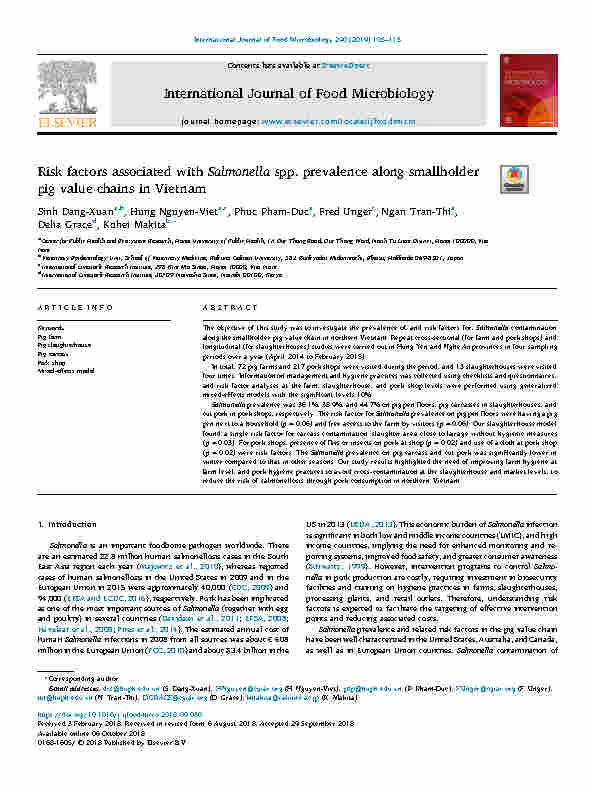Article Risk factors associated with Salmonella spp. prevalence along smallholder pig VC in Vietnam_2018
26/08/2024
DOCUMENT DESCRIPTION
The objective of this study was to investigate the prevalence of, and risk factors for, Salmonella contamination
along the smallholder pig value chain in northern Vietnam. Repeat cross-sectional (for farm and pork shops) and
longitudinal (for slaughterhouses) studies were carried out in Hung Yen and Nghe An provinces in four sampling
periods over a year (April 2014 to February 2015).
In total, 72 pig farms and 217 pork shops were visited during the period, and 13 slaughterhouses were visited
four times. Information on management and hygiene practices was collected using checklists and questionnaires,
and risk factor analyses at the farm, slaughterhouse, and pork shop levels were performed using generalized
mixed-effects models with the significant levels 10%.
Salmonella prevalence was 36.1%, 38.9%, and 44.7% on pig pen floors, pig carcasses in slaughterhouses, and
cut pork in pork shops, respectively. The risk factor for Salmonella prevalence on pig pen floors were having a pig
pen next to a household (p = 0.06) and free access to the farm by visitors (p = 0.06). Our slaughterhouse model
found a single risk factor for carcass contamination: slaughter area close to lairage without hygienic measures
(p = 0.03). For pork shops, presence of flies or insects on pork at shop (p = 0.02) and use of a cloth at pork shop
(p = 0.02) were risk factors. The Salmonella prevalence on pig carcass and cut pork was significantly lower in
winter compared to that in other seasons. Our study results highlighted the need of improving farm hygiene at
farm level, and pork hygiene practices to avoid cross-contamination at the slaughterhouse and market levels, to
reduce the risk of salmonellosis through pork consumption in northern Vietnam.


